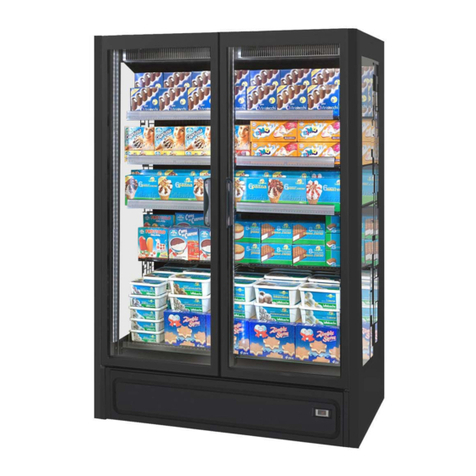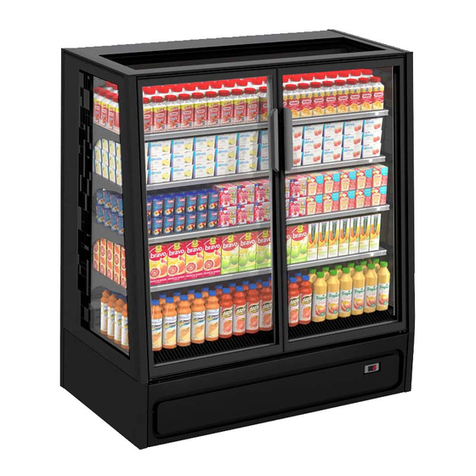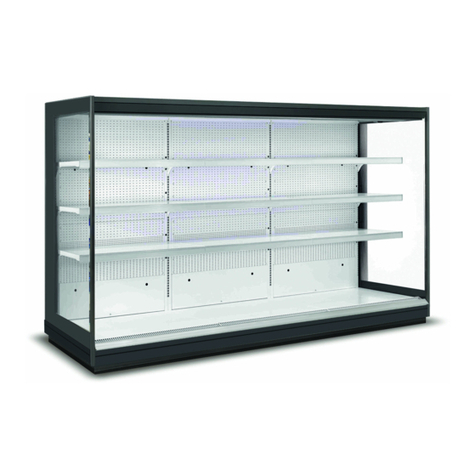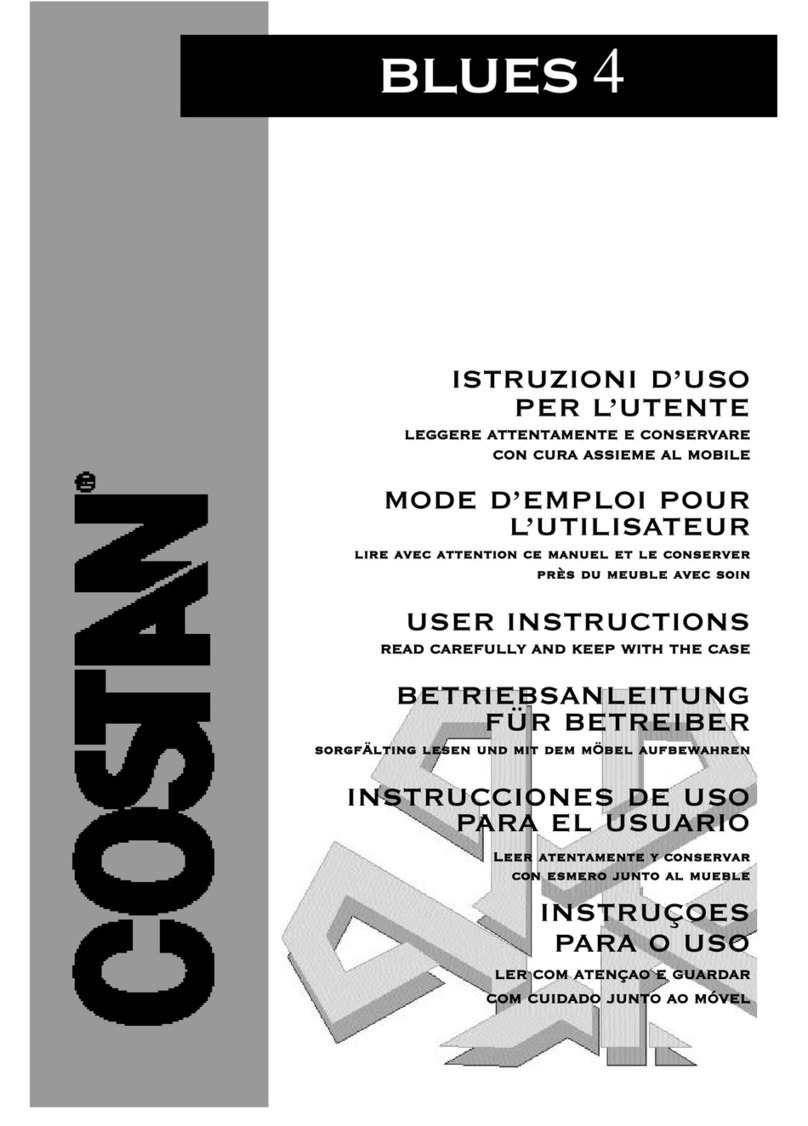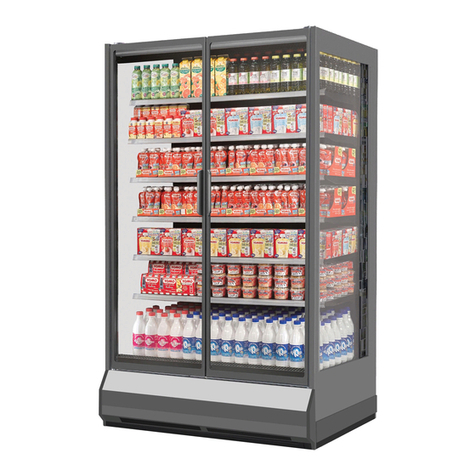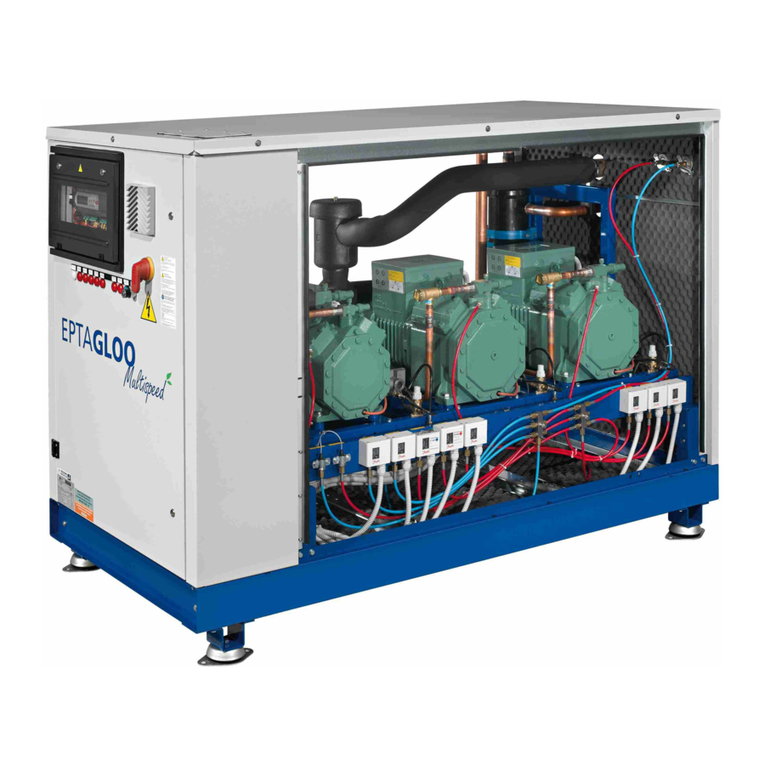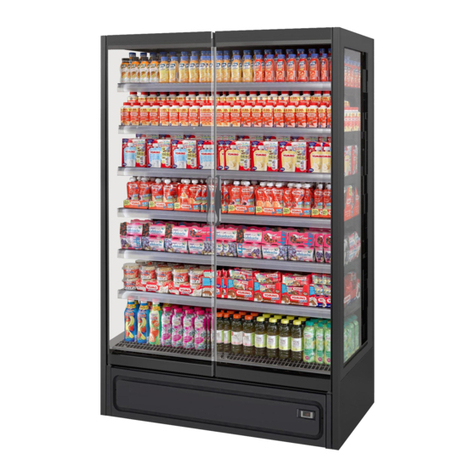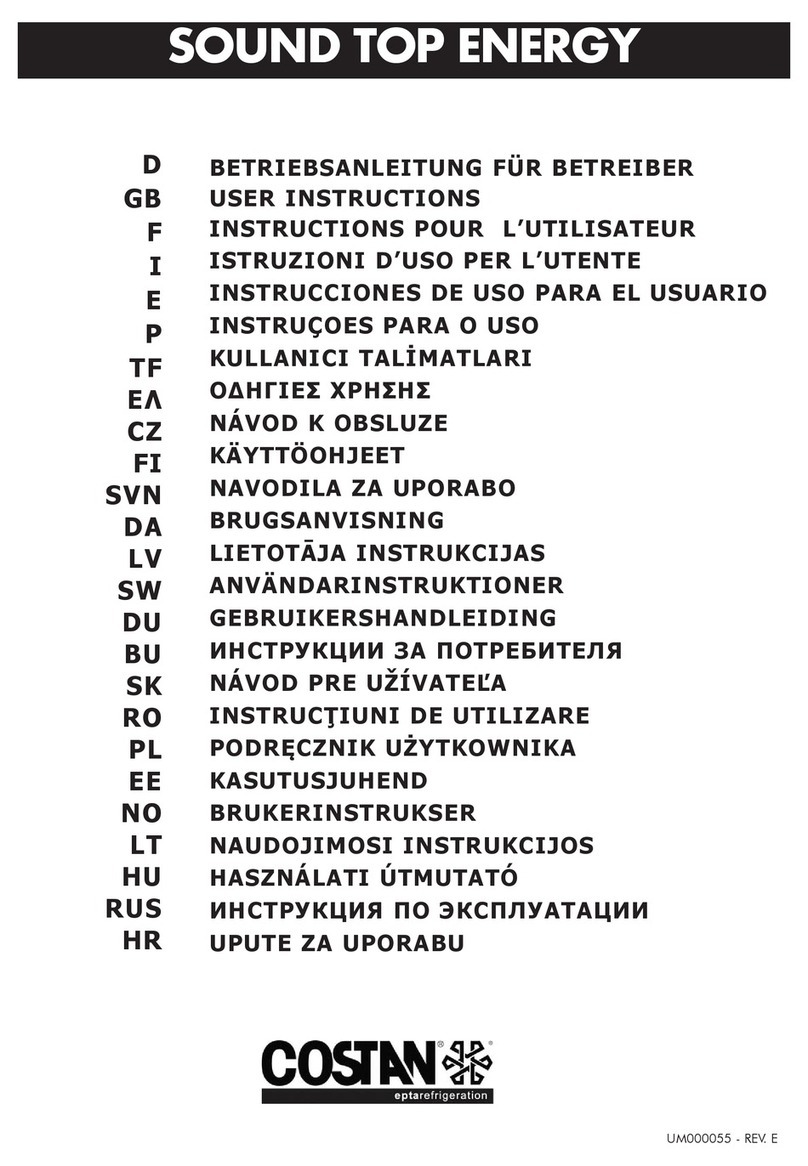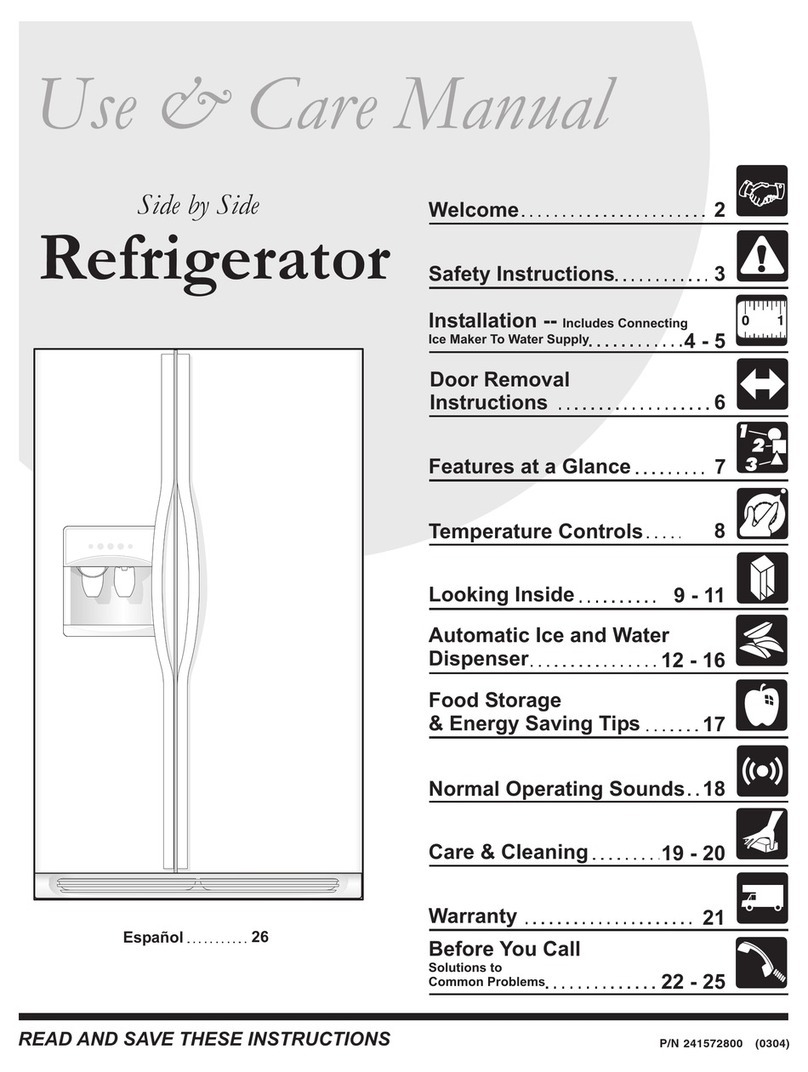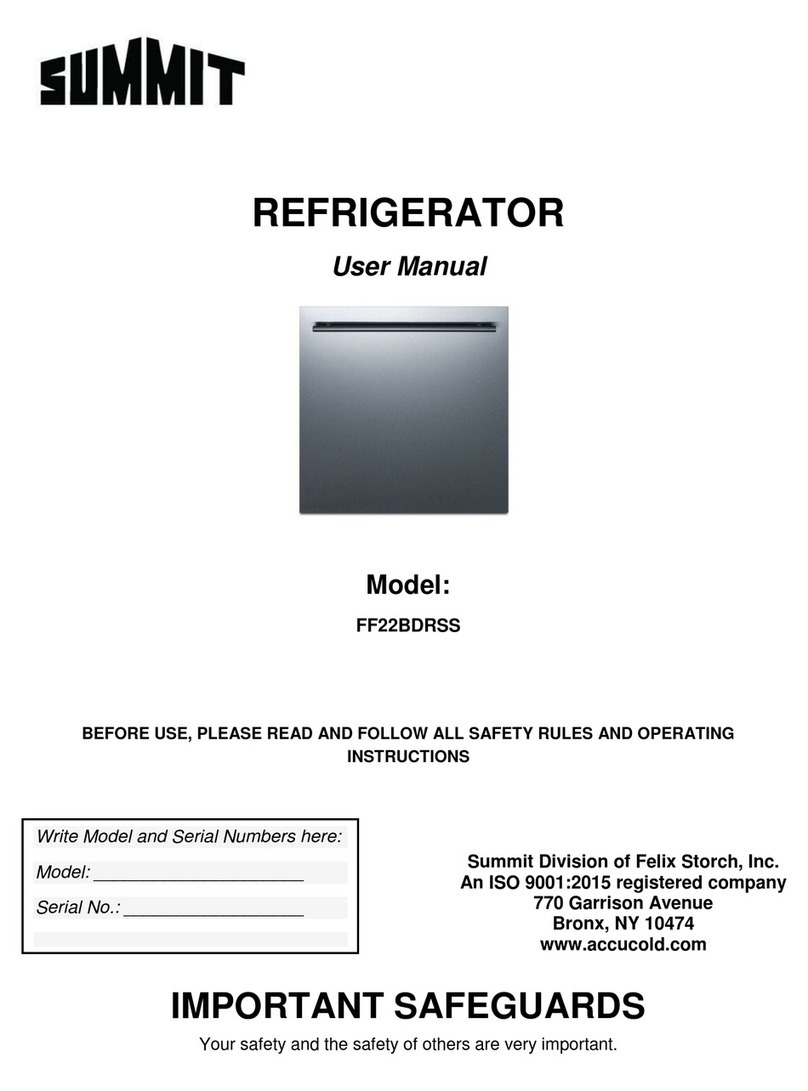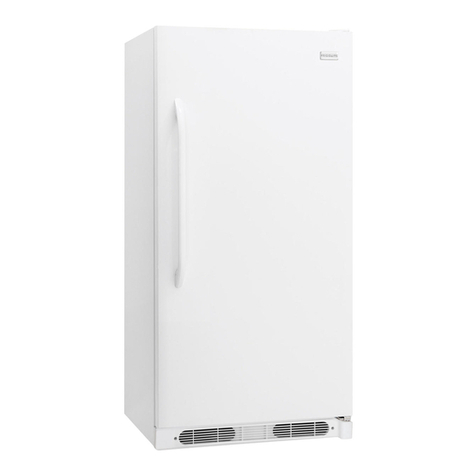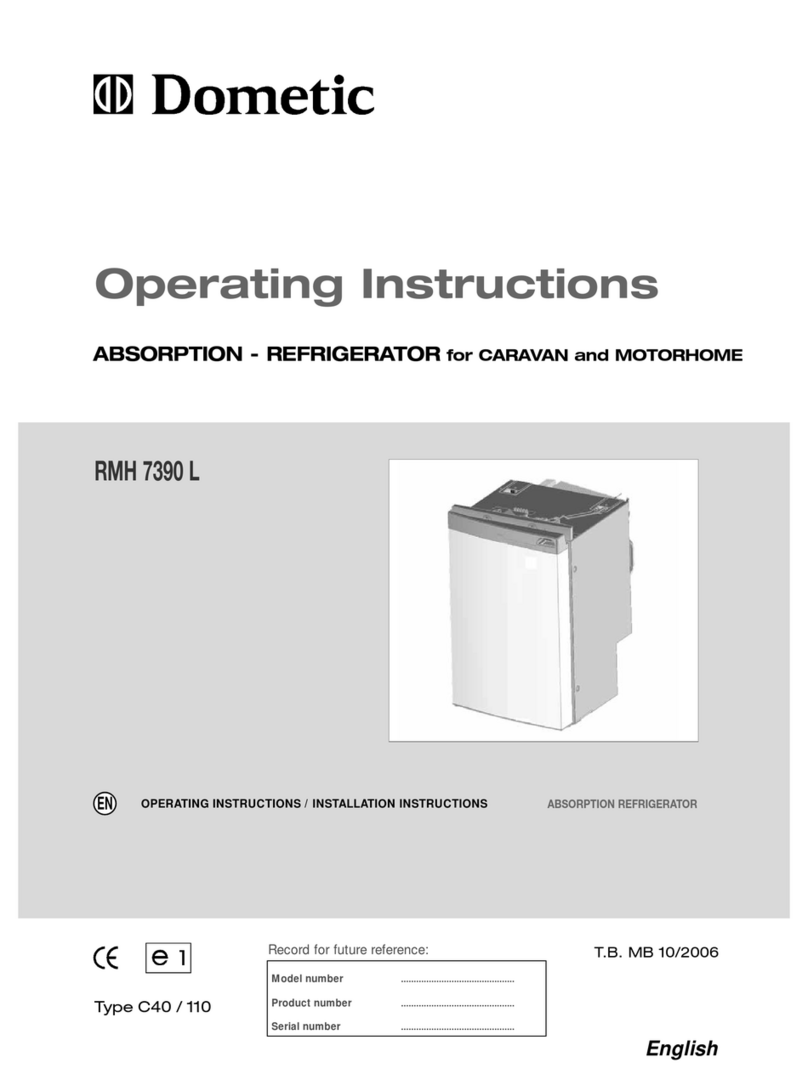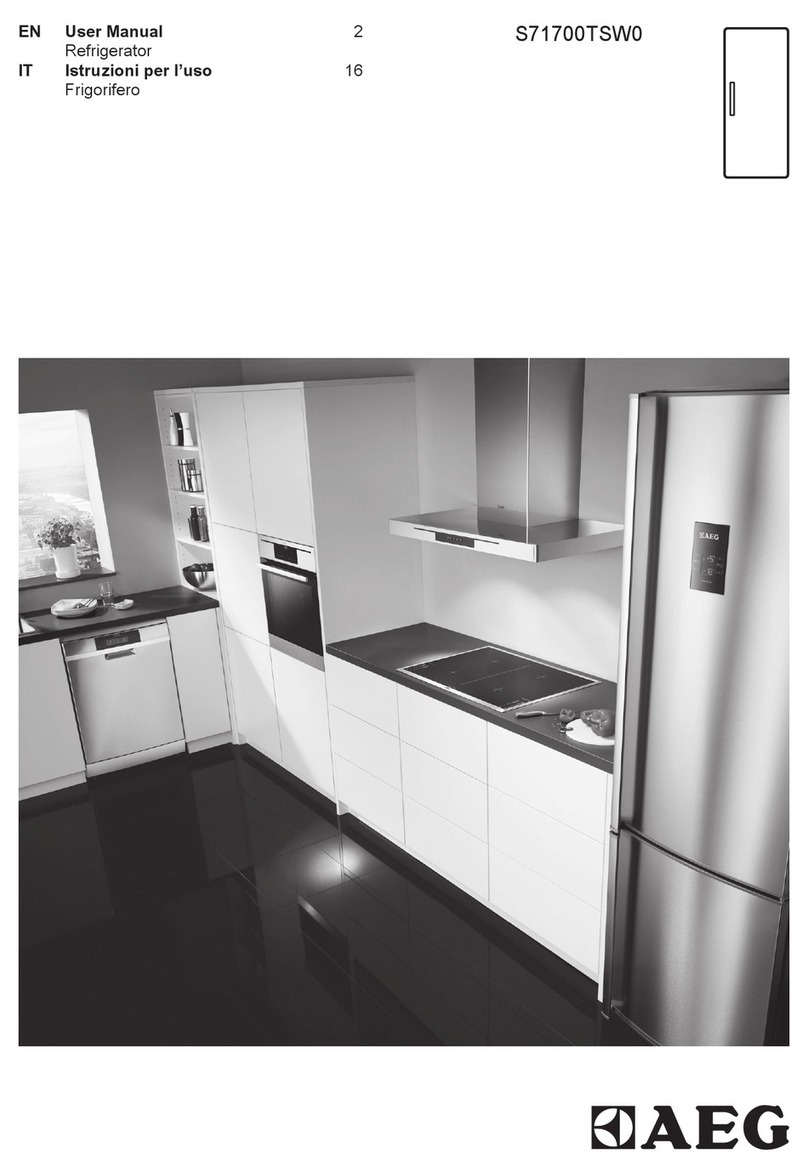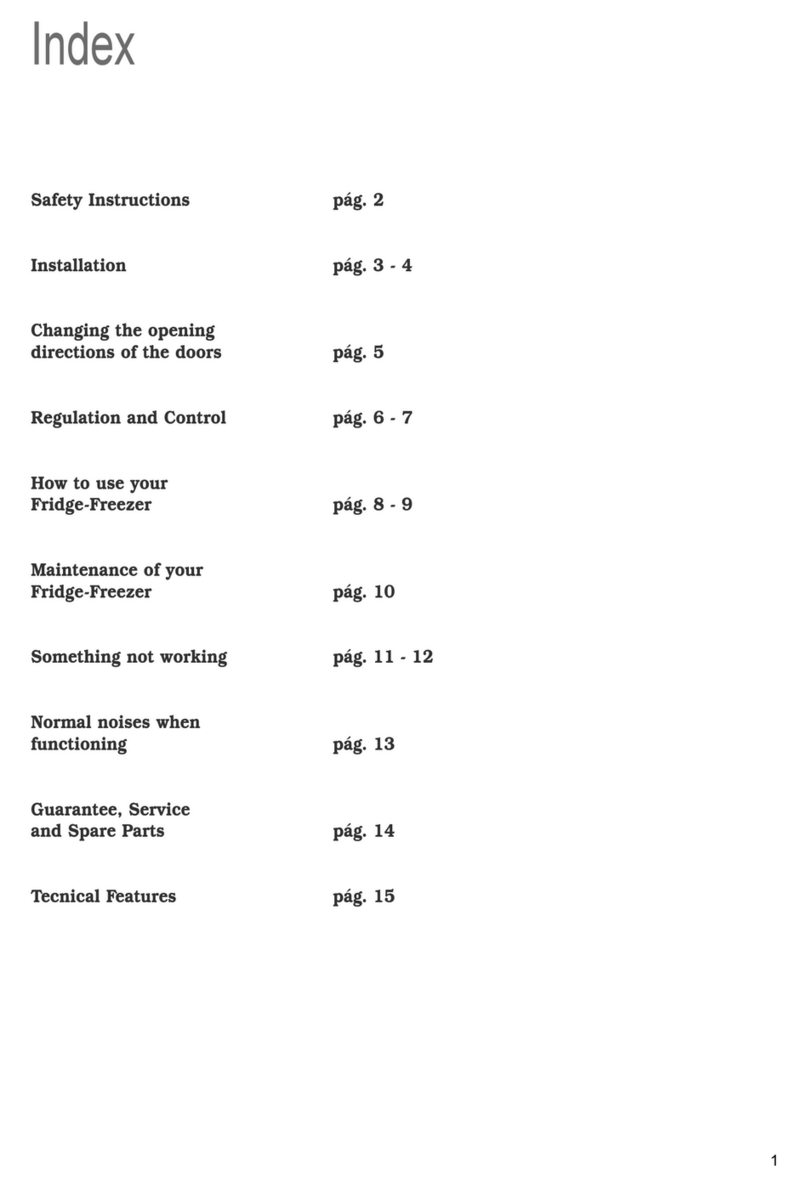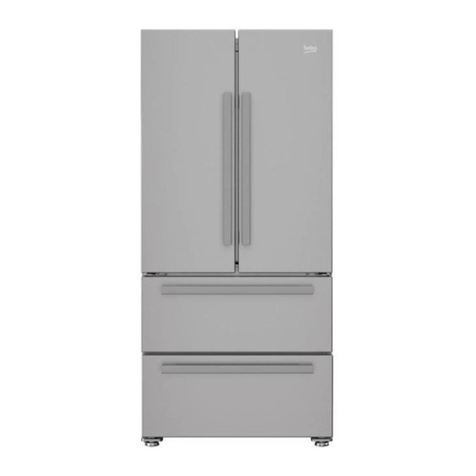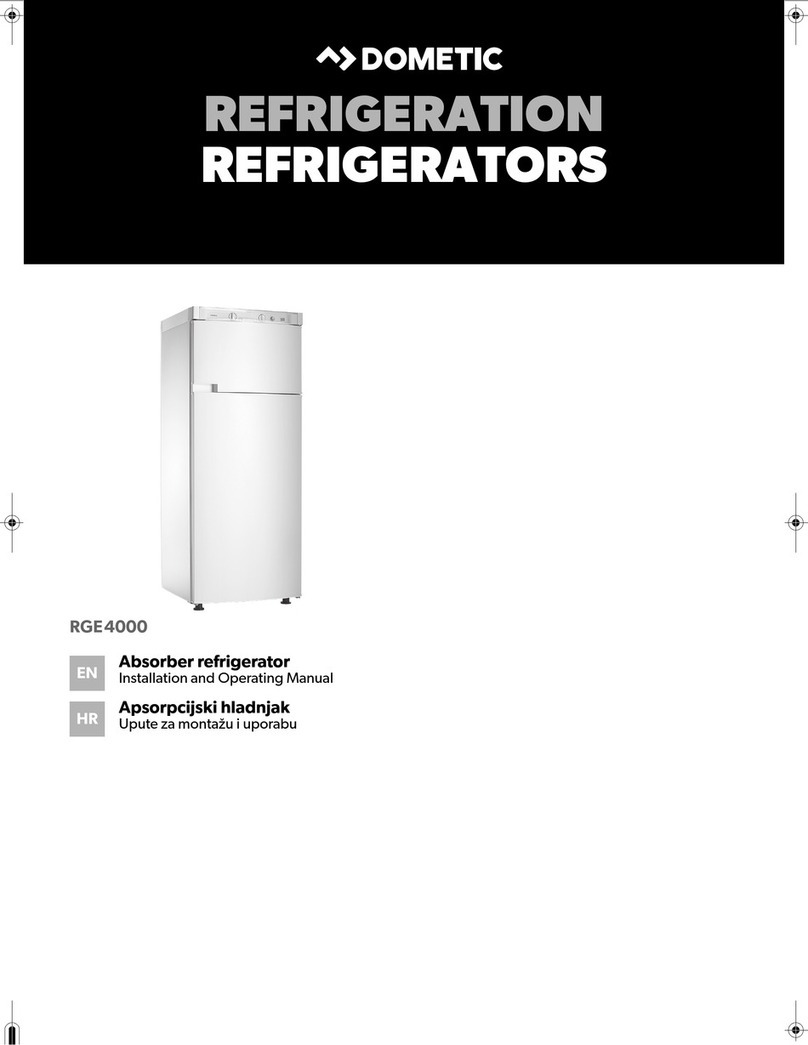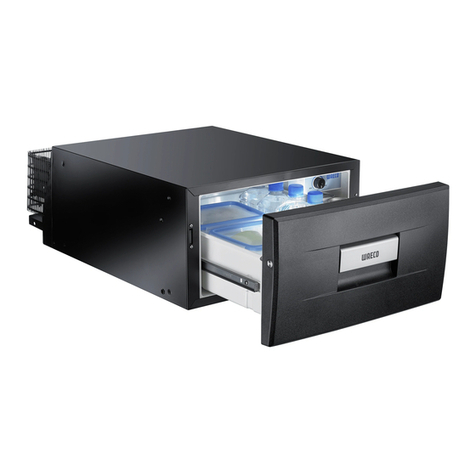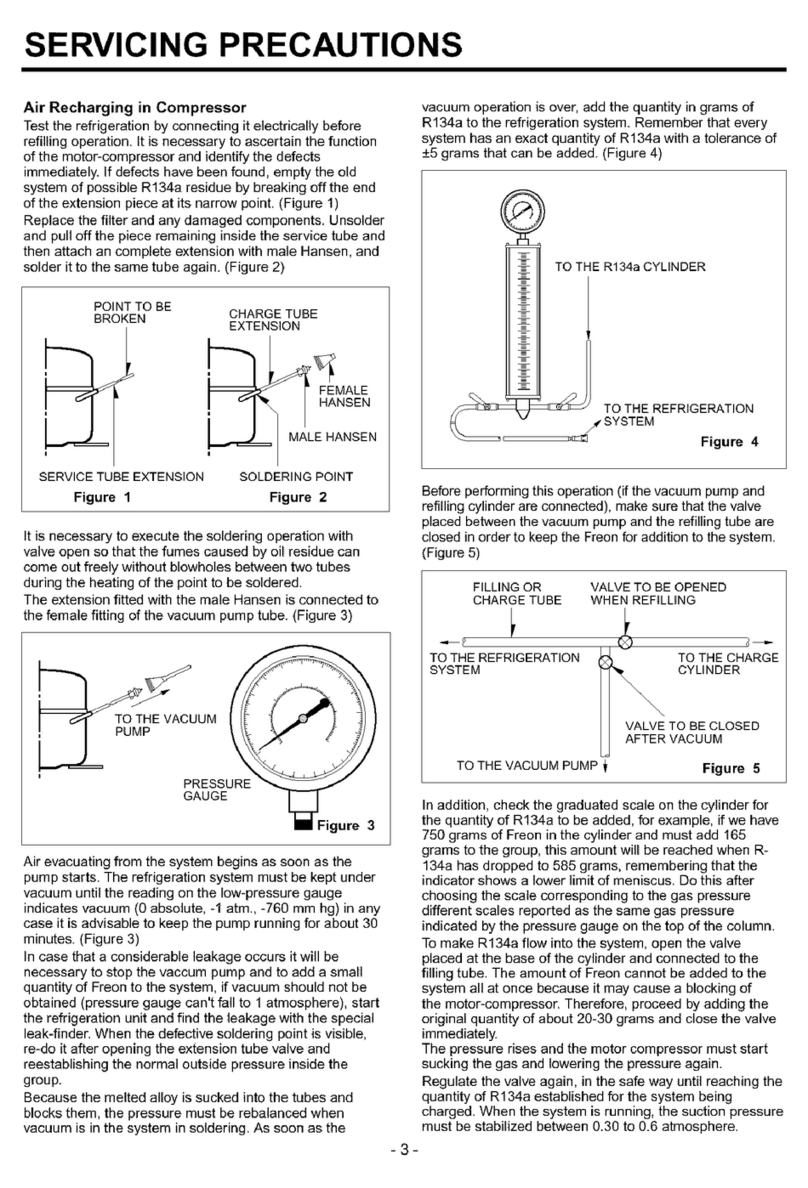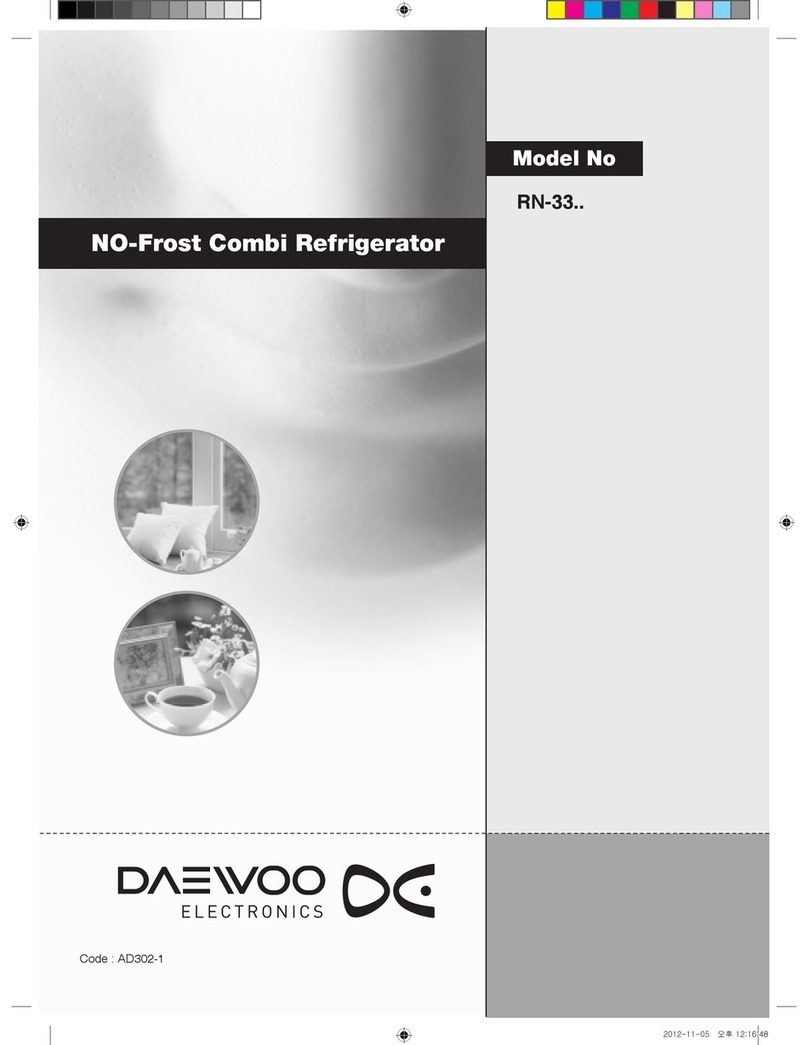AL FINE DI RIDURRE I RISCHI CONNESSI ALL’INFIAMMABILITA’, L’INSTALLAZIONE DI QUESTO APPA-
RECCHIO NON DEVE ESSERE EFFETTUATA SE NON DA PERSONALE ADEGUATAMENTE QUALIFICA-
TO.
OGNI ALTRO USO NON ESPLICITAMENTE INDICATO IN QUESTO MANUALE E’ DA CONSIDERARSI
PERICOLOSO ED IL COSTRUTTORE NON PUO’ ESSERE RITENUTO RESPONSABILE PER EVENTUALI
DANNI DERIVANTI DA USO IMPROPRIO, ERRONEO ED IRRAGIONEVOLE.
SAFETY ADVICE
ENSURE THAT AIR SLOTS ON THE CABINET ENCLOSURE ARE FREE FROM OBSTRUCTION.
DO NOT USE SCRAPE FROST OFF USING TOOLS OTHER THAN THOSE RECOMMENDED BY THE
MANUFACTURER.
DO NOT USE ANY ELECTRICAL APPLIANCES INSIDE THE STORAGE COMPARTMENTS FOR THE
FOOD FROZEN BY THE EQUIPMENT, UNLESS RECOMMENDED BY THE MANUFACTURER.
KEEPING PHARMACEUTICALS, GLASS BOTTLES OR FLASKS IN THE CABINET IS STRICTLY FORBIDDEN
AS THEY COULD GET BROKEN AND ENTAIL A SAFETY HAZARD.
ONLY QUALIFIED PERSONNEL CAN REMOVE PANELS OR GUARDS, AND ESPECIALLY THE ELECTRIC
BOARD COVER, WHEN THIS REQUIRES THE USE OF TOOLS.
DO NOT EXPOSE THE EQUIPMENT TO ATMOSPHERIC AGENTS.
DO NOT USE DIRECT OR INDIRECT WATER JETS ON THE CABINET. DO NOT TOUCH THE EQUIP-
MENT WITH DAMP OR WET HANDS OR FEET; DO NOT USE IT WHILE BAREFOOT.
THE EQUIPMENT IS NOT AIMED TO BE USED BY PERSONS HAVING IMPAIRED PHYSICAL, SENSORIAL
OR MENTAL FACULTIES (CHILDREN INCLUDED), OR BY PERSONS HAVING POOR EXPERIENCE OR
KNOWLEDGE, UNLESS THEY ARE SUPPORTED BY SOMEBODY IN CHARGE OF THEIR SAFETY OR BY
THE INSTRUCTIONS FOR THE USE OF THE EQUIPMENT. SURVEILLANCE MUST BE EXERCISED ON
CHILDREN IN ORDER FOR THEM NOT TO PLAY WITH THE EQUIPMENT.
THE POWER CORDS MUST BE PROPERLY SPREAD OUT, SAFE FROM SHOCKS AND FAR FROM
LIQUIDS, WATER AND HEAT SOURCES, AND IN PERFECT CONDITION. THE USE OF ADAPTOR
PLUGS IS FORBIDDEN.
ENSURE THAT THE POWER SUPPLY VOLTAGE MEETS THE DETAILS ON THE RATING PLATE OF THE
CABINET. THE CABINET MUST BE PROPERLY CONNECTED TO THE EARTHING SYSTEM.
JOBS INVOLVING THE COOLING CYCLE OR THE WIRING SYSTEM MAY ONLY BE PERFORMED BY
QUALIFIED PERSONNEL. DISCONNECT THE CABINET'S PLUG FROM THE MAINS OUTLET BEFORE
ANY JOBS.
DO NOT DAMAGE THE REFRIGERATING CIRCUIT: IT IS FORBIDDENT TO DRILL THE WALLS OF THE
CABINET IN ANY WAY, EITHER INTERNAL OR EXTERNAL (E.G. FOR THE INSTALLATION OF A SUPER-
STRUCTURE, AS THIS COULD BRING DAMAGE TO THE EVAPORATOR AND CONDENSER TUBES
BUILT INTO THE CABINET WALLS.
IF YOU WISH TO STICK ADHESIVE SIGNS ONTO THE CABINET, ONLY USE THIN FOIL. DO NOT LAY
THICK INSULATING LAYERS ON THE EXTERNAL WALLS OF THE EQUIPMENT AS THIS COULS COM-

